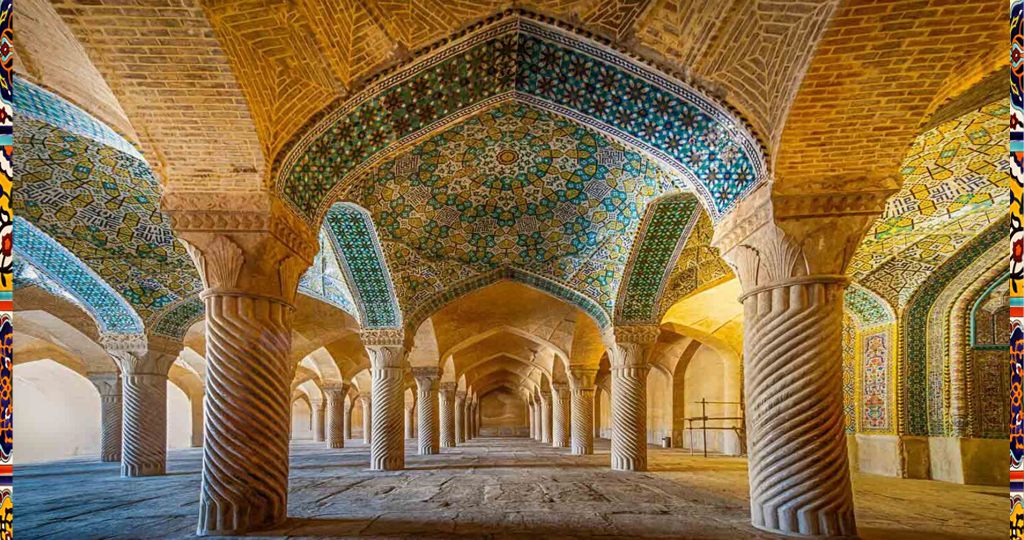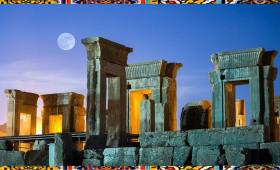When you enter Vakil mosque, its architecture and art push you to release yourself from all material and think about The greatness of your soul.
History of Masque
The Regent’s Mosque in one of the most beautiful Karim khan’s created in Shiraz. It is significant not only as a major religious building of the Zand period, but also as the only important building of its kind to be constructed in late 18th-century Iran. The mosque has taken its current shape after several stages of construction and restoration. It was begun late in Karim Khan’s reign, perhaps around 1766. In the high “Victorian” style developed under this monarch. Despite all its exuberant Qajar superstructure, the Vakil Mosque remains in plan and artistic treatment a perfect Zand edifice; there are certainly enough features to distinguish it from the preceding and subsequent architectural styles. It is remarkable for its generous spatial area and for the elegant proportions of its architectural units. The decorative treatment of the Zand religious buildings is also less conventional and more secular in type than that of the earlier mosques, bunches of flowers and bright colors being largely employed in the faience, which depended more upon the splendor of polychrome than upon hieratic correctness.
Architecture and Art
The mosque occupies an area of 8,660 sq.m. it is entered from the north through a recessed entrance, the upper vault of which is adorned with tiled “moqarnas”. The portal also features lavish tile work, cable-shaped stone friezes, and fine calligraphy. Its wooden gate, with the wings as high as 8 m, is a replica, a copy of the original door from the Zand age broken by a cannon ball during the Qajar period. A vestibule behind the entrance has two passages which lead into the courtyard. The north and south sides of the court feature lofty eivans. The lower parts of the porches and arcades are faced with marble slabs, finely carved in relief, with splendid floral motifs. The eivans are rectangular structures with a deep central recess, which is drawn into a pointed arch by faceted vaulting. The eivans are similar, except for a pair of minarets.
The north eivan is popularly called Taq-e Morvarid(“The Pearl Arch”), and this appellation seems to be a traditional in the mosque of Shiraz. The south eivan leads to a large, covered prayer hall, for which the building is most famous. In contrast to the rest of edifice, which is of backed brick, it is supported by forty-eight stone columns with spiral shafts terminating in acanthus leaf capitals. The marble stone for these columns was brought from Azarbaijan and Yazd. The tiled mihrab is centered in the back wall of the prayer hall. It is approached by a vaulted aisle, profusely adorned with faience, which distinguishes it from the other, undecorated area. The mihrab is covered with remarkable tilework having pink as the dominant color. It features tiled panels showing masterfully-painted leaves and flowers potted in vases, which themselves bear designs of landscapes and religious buildings. The mihrab is flanked by deep, tiled niches, carved at various elevations on either side. These niches are ascended by staircases of green marble, and serve as minbars. The minbar on the left is particularly notable. It is climbed by fourteen steps cut out of a single great block of marble. Karim khan is reported to have joked that this minbar cost him more than if it had been made of pure gold. The lavish use of stone is an atypical feature for the Iranian mosque prior to the Zand period. These used stone sparingly, and mainly for decorative purposes.
This mosque is one of historical and special mosque that has been remained for Iranian people. If you come to Shiraz don’t miss this beautiful masque.
Reference:
[1] A. Bihishti, Travel Guide to Fars, Iran _ Lessie Weatherman _ 9789643342456. Tehran, Iran: Rowzaneh, 2006.
[2] A. Hekmatnia and M. Ahmadi, fourteen article in tourism. Shiraz,Fars,Iran: Parto Rakhshid, 2018.
Attachment [1] Eivans: a rectangular hall or space, usually vaulted, walled on three sides, with one end entirely open. [2] Qiblah: is a direction to say prayers of Muslims and is in fact the turning point of the mosque. [3] Pulpit in the masque: is a place where the imam (prayer leader) stands to deliver sermons. To see some unique locations of Shiraz, join us in our city tour.



